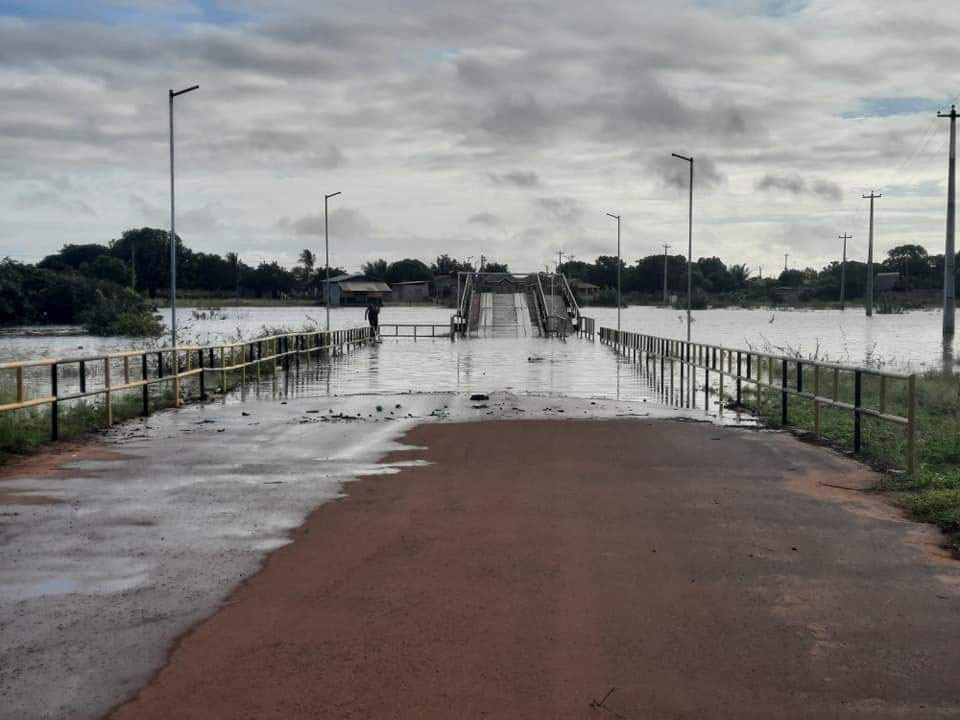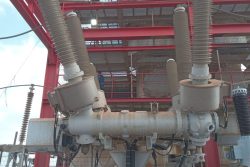Extensive rainfall, which has resulted in overflowing rivers, has led to the inundation of some communities, farmlands and roads in the Deep South Rupununi and parts of Lethem, in Region Nine.
Up to Monday, communities in the Deep South Rupununi had experienced torrential rainfall for three days straight.
The two most affected communities in the district are Parabara and Baishaidrum, located close to the Guyana-Brazil border.
The Civil Defence Commis-sion (CDC), in a statement yesterday, announced that it is closely monitoring the seasonal flooding in several parts of the region.
From its reports and assessment, no homes have been directly impacted but sections of roads, bridges and savannahs have been inundated.
The CDC is prepared to deploy resources and personnel to Region Nine if assistance is required, it added.
The agency also advised all administrative regions across Guyana to be alert and activate their Regional Response Mechanisms as required and in keeping with their Regional Disaster Preparedness and Response Plans.
Guyana is currently within the annual May/June rainy season during which the National Weather Watch Centre indicates that continuous rainfall is expected.
Water rising
Regional Chairman Bryan Allicock yesterday related that the overflow from the Takutu River has resulted in a section of the St. Ignatius road being flooded and areas close to the river being inundated.
“The water is rising very fast because between 8 am and 4.15pm the water level increased by 12 inches. The water was 4ft this morning and this afternoon it reach to five feet,” Allicock explained before stating that they are mobilising to facilitate evacuations.
Within the environs of Lethem, he said, at least 34 cassava farms are under threat and as in the Deep South Rupununi, farmers are forced to reap their crops.
“Right here in Moco Moco, the people are calling on me to get some drums to make farine pans so they can make farine and the cassava bread so the cassava they pick won’t spoil,” he noted.
He explained that while they currently have two schools and a sports complex to function as shelters and house families, they will have to identify more shelters given that the pandemic is still a threat.
Allicock noted that while they are continuing to monitor the situation, he will be meeting with stakeholders today to identify new shelters and discuss how they can assist affected families.
He disclosed that the region has already dispatched two boats to the St. Ignatius area to assist in transporting persons to work.
When contacted, Vice Chair-man of the South Rupununi Dis-trict Council (SRDC) Michael Thomas told Stabroek News that while the rainfall had eased, the water levels in many communities remained high.
He said more than 200 farms were under threat and farmers were trying to reap in a bid to salvage their crops. However, he pointed out that in some areas where water levels are extremely high, cassava is beginning to rot.
Over the weekend, the SRDC, with assistance from the Ministry of Amerindian Affairs, distributed food hampers to affected residents in Parabara and other communities.
Thomas said in Parabara, cases of COVID-19 are rising there and with a strain on food security in the community supplies had to be sent in.
On this note, he explained that with the deplorable condition of the road and flooded areas they had to utilise ATVs and motor cycles to transport food supplies.
“Despite the heavy rains and flooded creeks, we were able to use ATVs, motorcycles and boat to transport the food supplies to Parabara on Saturday,” Thomas said.
Upgraded Road
Thomas, who is also the Toshao of Aishalton, lamented the poor quality of work done to upgrade the main access road between his community and Karaudarnau.
“They use a loam because they didn’t have the correct laterite material. They grade and backfill but some parts even tractors get stuck. It is very bad and soft motorcycles and minibuses can hardly pass through the area,” he said.
According to him, the village councillors had recommended that the contractor install culverts at strategic points but their recommendations were not considered. The road project was executed just over a month ago and was funded by the Regional Democratic Council.
“It is just over a month that they upgraded the road and it is in a terrible condition now. The vehicles, if they go to Lethem, have to travel through Karaudar-nau and Katoonarib road, which is the back road,” he said.
He said they are calling for culverts to be installed along the thoroughfare to prevent the situation from recurring.
A notice posted on Facebook by a resident of Karaudarnau advised persons to utilise the bridge that links the community to Aishalton with caution.
The resident explained that the bridge support has been damaged by erosion.
“So we are kindly asking no heavy duty vehicles to approach the bridge at this time. Until we can make better arrangement in enhancing the bridge,” the resident posted.
A picture posted along with the notice showed water touching the deck of the bridge.







